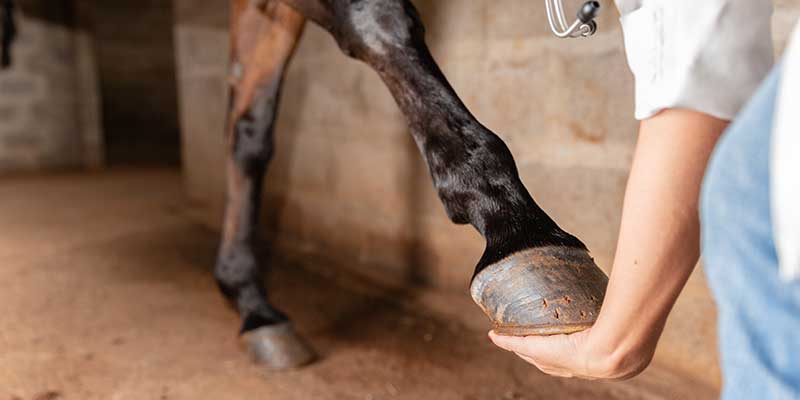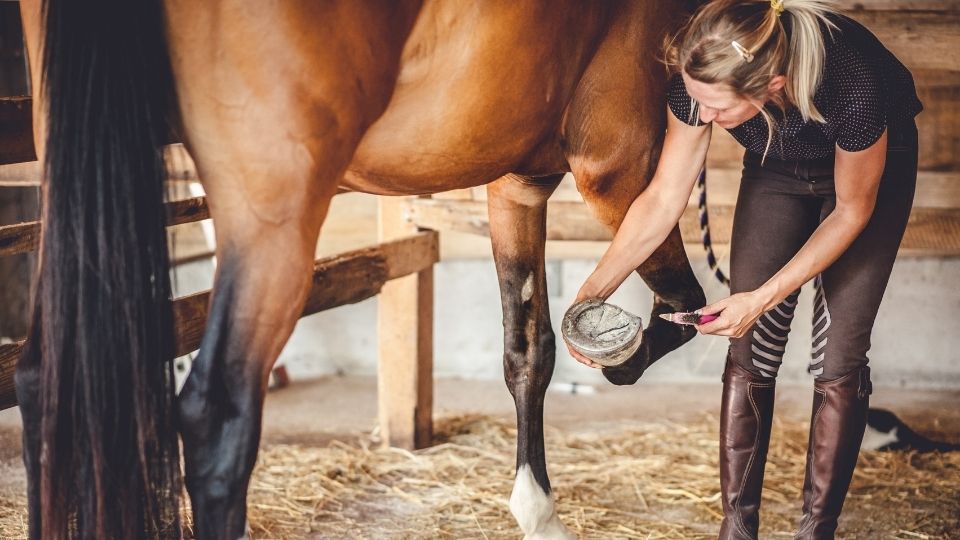
How Often to Trim Horse Hooves for Optimal Health?
Share
As a health-conscious pet owner, understanding how often to trim horse hooves is essential for maintaining your horse's overall well-being. Hoof care is often overlooked, yet it affects everything from movement to comfort and longevity. In this comprehensive guide, we will cover the necessary practices, signs that indicate a trim is needed, and how regular hoof care can prevent significant issues down the line.
First and foremost, let's dive into the basics: horse hoof anatomy and how growth patterns can influence trimming schedules. Knowing what to expect is crucial to keeping your horse happy and healthy.

The Importance of Regular Trimming
Regular trimming is vital for your horse's hoof health. It helps to prevent issues such as cracking, overgrowth, and other complications. Horses' hooves grow at different rates depending on various factors including age, breed, and lifestyle. Generally, hooves grow about 1/4 to 1/2 inch monthly, leading to frequent trimming requirements.
How often to trim horse hooves can depend on different factors:
- Age: Young horses often require more frequent trimming than older ones.
- Activity level: Horses that are active may need trims more often due to increased wear and tear.
- Environment: Horses kept on softer footing may require trimming less frequently than those on hard, rocky surfaces.

Signs Your Horse Needs a Trim
Some obvious signs may indicate it is time for a trim:
- Visible overgrowth: If the hoof extends past the sole, it's time for action.
- Uneven wear patterns: This can lead to lameness and discomfort.
- Signs of pain or limping: Consult with a vet if you notice your horse in distress.
- Cracks and splits: Even minor cracks can worsen without timely care.
Frequency of Trimming
The standard approach is to trim every 6 to 8 weeks. However, this can vary immensely depending on the horse's specific needs. For instance, if your horse is prone to overgrown hooves, you may need to trim every 4 weeks.
Its essential to keep a consistent schedule and assess your horse's hooves regularly.
Factors Affecting Hoof Growth Rates
As mentioned, several elements can impact hoof growth rates:
- Diet: A balanced diet contributes to healthy hoof growth. Make sure your horse is getting enough nutrients.
- Weather conditions: Wet weather can lead to softer hooves, while dry, hard conditions foster faster growth.
- Genetics: Some breeds naturally develop hooves that grow more rapidly.

Basic Hoof Care Routine
Aside from regular trims, a comprehensive hoof care routine should include:
- Daily inspection: Check for cracks and signs of disease.
- Cleaning hooves: Regular cleaning removes dirt and debris.
- Consider shoeing: Depending on your horse's needs, consult your veterinarian or farrier.
For more detailed information, visit our articles on how to trim horse hooves and split hooves.

When to Seek Professional Help
Even if you are doing everything right, your horse's hooves may still face challenges. Conditions such as thrush and laminitis may arise. It's crucial to engage a veterinarian or farrier when:
- Signs of injury or discomfort are present.
- You are unsure about trimming.
- There are persisting issues in hoof growth.
Conclusion
Knowing how often to trim horse hooves is essential for any responsible horse owner. Regular trims, proper care routines, and awareness of your horse's needs can lead to a healthier, happier horse. Trimming isn't just about aesthetics; it is about ensuring the well-being of your beloved animal.
FAQ Section
1. How can I tell if my horses hooves need trimming?
Look for overgrowth, uneven wear, cracks, or signs of discomfort in your horse's gait.
2. Can I trim my horse's hooves myself?
Yes, but only if you have the right training and tools. Consult a professional farrier if you're unsure.
3. What are the signs of hoof disease?
Symptoms can include excessive heat, foul odor, and visible swelling, warranting immediate veterinary care.
As an Amazon Associate, I earn from qualifying purchases.
